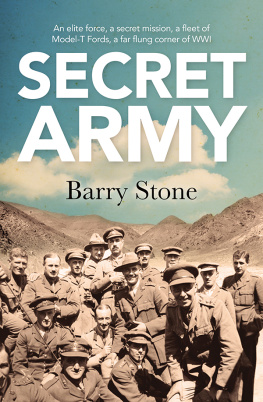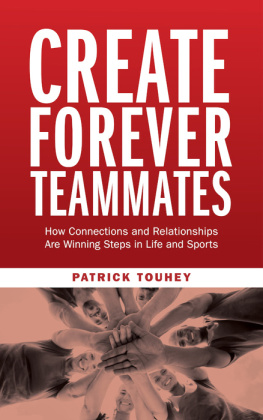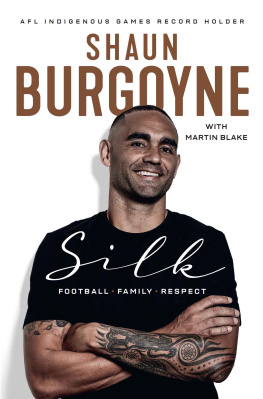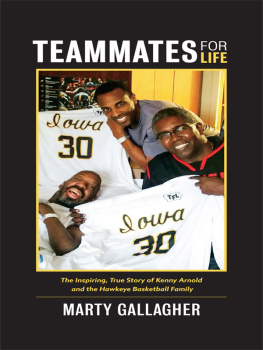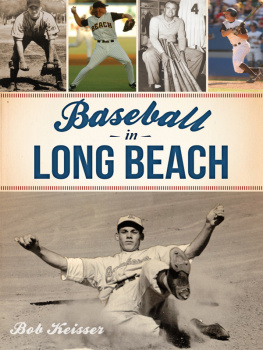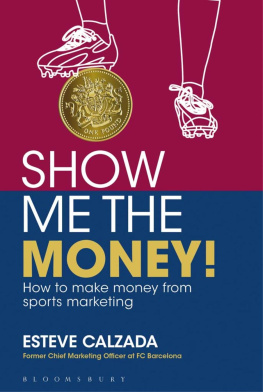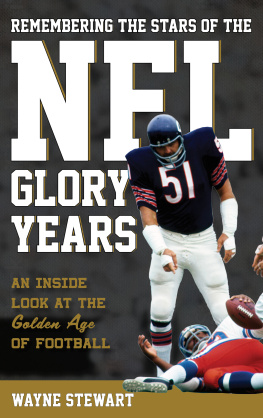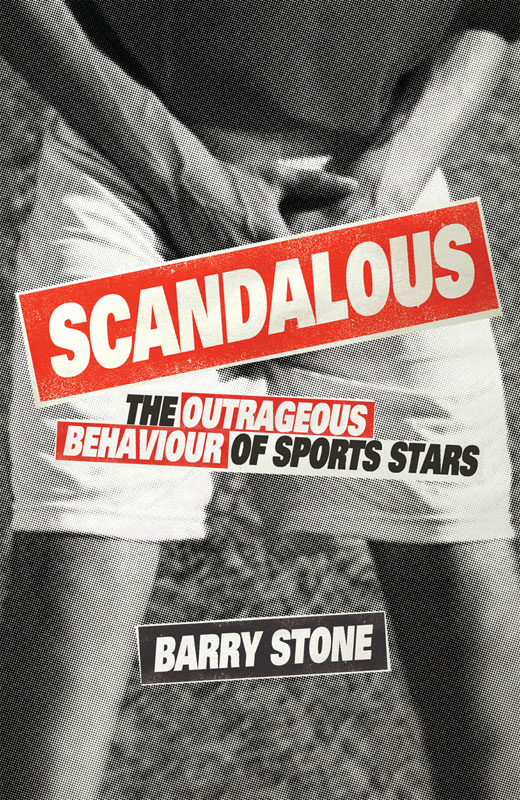

Published in 2012 by Hardie Grant Books
Hardie Grant Books (Australia)
Ground Floor, Building 1
658 Church Street
Richmond, Victoria 3121
www.hardiegrant.com.au
Hardie Grant Books (UK)
Dudley House, North Suite
3435 Southampton Street
London WC2E 7HF
www.hardiegrant.co.uk
All rights reserved. No part of this publication may be reproduced, stored in a retrieval system or transmitted in any form by any means, electronic, mechanical, photocopying, recording or otherwise, without the prior written permission of the publishers and copyright holders.
The moral rights of the author have been asserted.
Copyright Barry Stone 2012
Cataloguing-in-Publication data is available from the National
Library of Australia.
eISBN 9781742738369
Cover design by Design by Committee
Contents
Nice guys finish last.
Leo Durocher, aka Leo the Lip, baseball player build
Sport does not build character, it reveals it.
Heywood Broun, author
Scandals in sport, just as they so often are in life, are not always easy to see, which is why it must have seemed to everyone at Francis Stadium in St Louis, Missouri, on that blisteringly hot August day, that the American long-distance runner Frederick Lorz had just run a mighty, albeit appallingly organised, marathon. To begin with the officialsnone of whom had ever likely run a marathonstarted the 42-kilometre event at 3 pm, with the temperature at 35 C and conditions at their most stifling. Support vehicles, permitted for some unfathomable reason to drive along in front of their runners on the routes heavily rutted dirt roads, threw up vast clouds of dust, which in no time started to clog the competitors lungs and fill their stomachs. The only water stops were a water tower and an old well. Eighteen of the events 32 starters would fail to finish. One runner was seen doubled over by the roadside vomiting, while others simply collapsed. William Garcia of California swallowed such a copious amount of dust that his stomach began to haemorrhage. Felix Carbajal, a Cuban runner who had to beg and hitchhike his way from Cuba to Missouri in order to compete, hadnt eaten in two days. Carbajal stopped at an orchard mid-race, sat down to eat some fruit, and still finished fourth. Another runner who was chased off the course by a rabid dog rejoined the race after eventually ditching the animal and finished ninth.
Of all the competitors who braved the conditions that day, it was Frederick Lorz who was the first to enter the stadium, crossing the finish line in a time of 3 hours 13 minutes. The crowd stood and cheered, and a throng of officials pressed themselves around him, among them Alice Roosevelt, daughter of US President Theodore Roosevelt, who was seen effusively congratulating him on a fine finish. But all was not as it appeared to be. Lorz, it was shortly to be revealed, had only run half a race. At the 14-kilometre mark he broke down with stomach cramps and had accepted a ride in his managers car, which took him 18 kilometres in the direction of the stadium before it, too, broke down. Having in the meantime received his second wind, Lorz got out of the car and decided hed run the last few kilometres to the finish line as though nothing had happened.
Lorz did, to his questionable credit, later admit to his guilt, but only after being confronted by spectators who claimed that he had cheated. Whether or not he would have confessed freely if nothing had been said will forever be open to debate. Furious officials immediately disqualified Lorz and banned him for life, though this was subsequently overturned and the next year he won the Boston Marathon.
In all of the hullabaloo that followed Lorzs disqualification, it is easy to forget that another runnera British-born American named Thomas Hickshad followed Lorz into the stadium that day and was belatedly proclaimed the events actual winner. Similarly overcome by the atrocious conditions and reduced to a walk, Hicks was himself given something of a reprieve as he approached the 26-kilometre mark. When his handler Charles Lucas, a somewhat shadowy character who claimed but was never actually found to have graduated from the Harvard Medical School, saw how fatigued his man was, he decided to administer the first of two one-sixtieth grains (about 1 milligram) of strychnine mixed with raw eggs, followed byperhaps by way of an afterthoughta shot of French brandy to wash it all down. Strychnine was a popular and effective rat poison at the time but it is also a powerful stimulant that acts upon the central nervous system to tighten tired muscles when taken in small enough doses. Oblivious to the fact that a third dose would likely have killed him, Hicks crossed the finish line three kilos lighter than he was at the start of the race in a time of 3 hours 28 minutes, with a performance-enhancing poison in his belly and Lady Luck by his side. When it was revealed that he had been assisted, an outraged publicwho viewed drugs as a legitimate method of achieving peak performancedeemed it scandalous that the other runners werent also given strychnine, egg and brandy cocktails, and an equal chance at glory!
It had been one of the most scandal-riddled races of all time. But it didnt occur in the era of sponsorship. It didnt even occur in the era of big moneyor even of any money. It was the 1904 Olympic Marathon, a world away from our modern, professional era but sharing with it one timeless constant: the need to win. Athletes and those who manage them have always wanted to win, and though most pursue that want with fairness and integrity, there will always be those who are prepared to do anything.

It has been suggested that Hickss two milligrams of strychnine marked the beginning of the modern age of doping (derived from the Dutch word doop, a viscous opium juice), but his actions should be seen in the context of the times. Not only was strychnine absent from what was a rudimentary, almost meaningless list of officially banned substances, but in 1904 the prevailing opinion on the street was that drugs were an aid to athletes, not a hindrance. Indeed, the very concept of drugs impinging upon the purity of competition hadnt even entered the publics moral consciousness. In any case, it wasnt the long-distance runners of the late nineteenth and early twentieth century who would eventually carry the burden of being tagged the worlds first organised drug cheats. It was the cyclists.
The sport of cycling cant escape the fact that in the 1880s it pioneered what we consider to be the modern age of doping. In the early years of the Tour de France, cyclists wore ether-soaked handkerchiefs across their mouths to dull the pain in their lungs, the result of Le Tours gruelling stages, some of which were as long as 300 kilometres. Riders regularly took a popular mix of coca leaves (a powerful stimulant and the raw material for cocaine) and winevin Marianiand in the 1890s were even known to take the explosive liquid nitroglycerine because it aided respiration (presuming if, like strychnine, it didnt kill you first).
By the end of the 1920s, the indiscriminate administering of hypodermic needles into the arms of cyclists and athletes by managers and a coterie of handlers, often with questionable medical backgrounds, led sports bodies across Europe and the United States to the realisation that some restrictions on drug use might be prudent. By this time drug-taking had become so endemic in Le Tour that the 1930 tour rule book made the startling claim that organisers would no longer supply its riders with drugs, a simultaneous admission of guilt and good intentions. But the inevitable infiltration of drugs into sport was not going to be stopped. Developments in drugs were coming at a cracking pace, and official testing was still decades away. No sport would be spared. The genie was out of the bottle.
Next page

